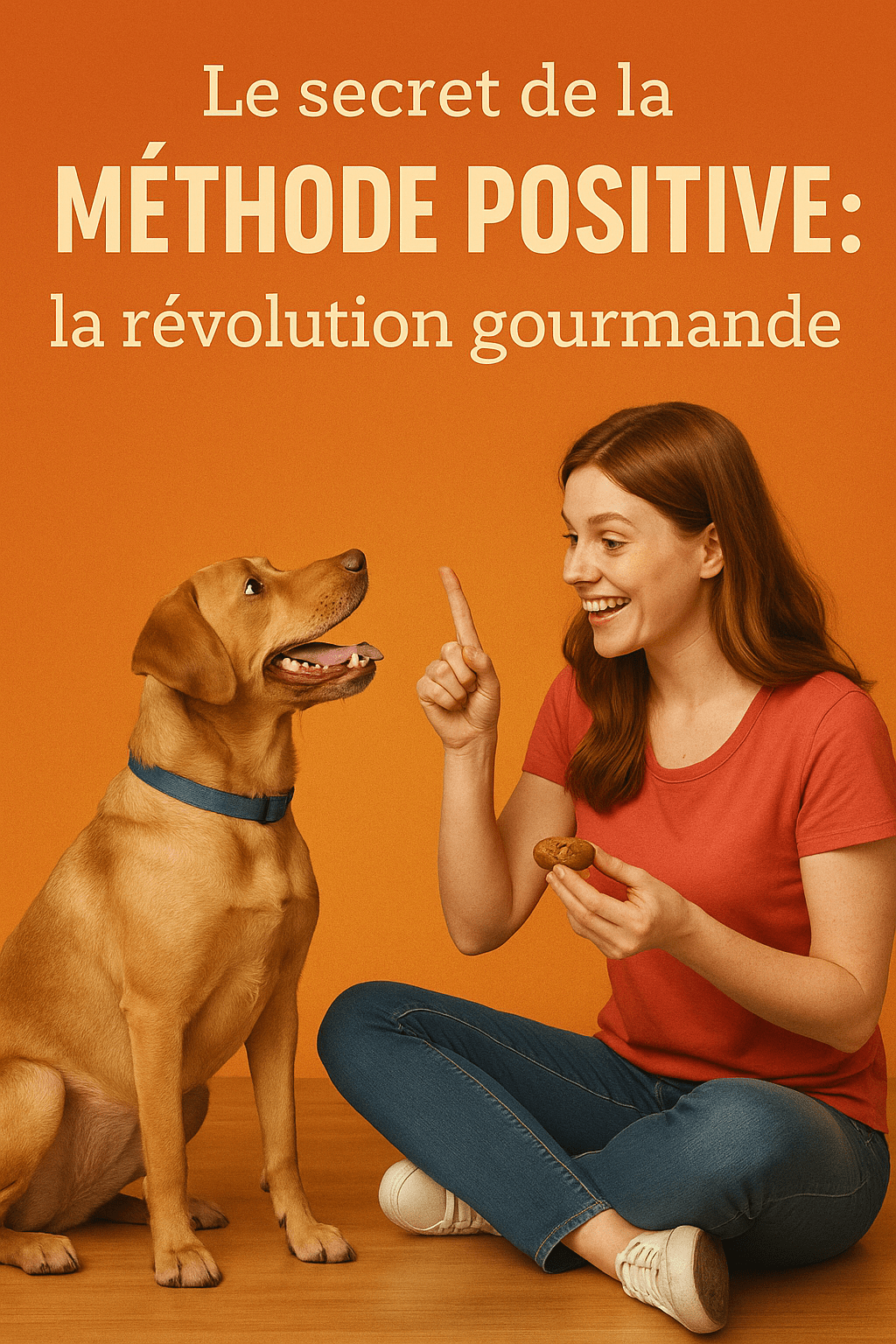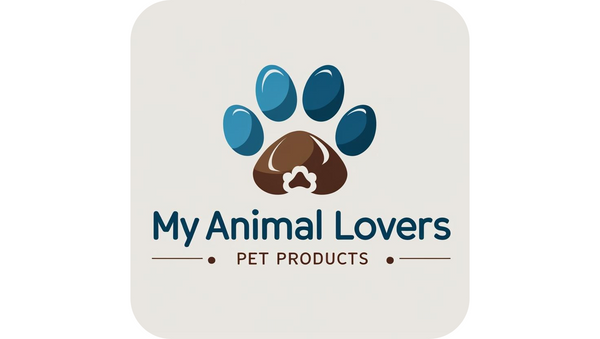
Dog Training: A Complete Guide to Training Your Dog and Puppy
Share
Hello animal lovers!
Who said that training a dog was an obstacle course, a marathon of "sits" and "downs" that would make a staff sergeant pale? At My Animal Lovers , we are convinced that learning is, above all, an adventure full of laughter, complicity and... treats! Imagine: your faithful companion, a little awkward around the edges, who manages to sit perfectly for the first time. The victory is so wonderful that you feel like you've grown wings. And that's exactly what we're going to talk about today: how to turn training into a real pleasure for both of you.
Because yes, training your dog is the key to a harmonious life. It's a bit like learning a new language with a friend who only speaks with barks and slobbery licks. It's a way to communicate, to understand each other, and above all, to ensure the well-being of your pet. So, fasten your seatbelts (and maybe your dog's leash) because we're off on a journey to the land of raised paws and wagging tails!
The Secret of the Positive Method: The Gourmet Revolution
We all remember images of old trainers who were a bit... bossy. Forget all that! The days of reprimands and punishments are over. Today, we prefer the " positive reinforcement " method, an approach that, let's be honest, is much more fun. The idea is simple: if your dog does something good (like not stealing your gym socks), you reward them! And what better reward than a delicious treat ?
Picture this: You ask your dog to sit. He does. The next second, a small natural treat lands in his mouth. His brain goes, "Ah, I did the right thing! And what's more, I got a super-tasty reward! I'm going to do it again!" It's a virtuous circle of happiness, motivation, and... calories (but we've thought of everything; we have plenty of healthy options!).
The advantage of this method? It doesn't create fear or anxiety. Your dog learns through desire, through play, not through fear. Avoid harsh "No!" and unnecessary shouting. Instead, use encouraging words, petting, and lots of love. And let's be clear, it's still more enjoyable to distribute healthy dog treats than to shout, right?
The Shock Duo: Patience and Consistency
Dog training isn't a sprint, it's a marathon. And like any good race, it takes patience. You don't become Einstein overnight, and your dog won't become the next obedience champion in a five-minute session.
The sessions should be short and regular. Five to ten minutes a day is perfect. We don't want to bore our four-legged friend. The secret is repetition . Repeat the same commands, with the same words and the same gestures. And here we come to a crucial point: consistency .
If you say "sit" and your partner says "sit," your dog is guaranteed confusion. It's like trying to learn English with two teachers who have different methods. The whole family needs to be on the same page. Choose one word for a command and stick to it. "Sit," "down," "stay"... clear, precise, and concise words.
What if your dog doesn't get it right away? Don't panic! Now's the time to put on your "zen master" hat. Repeat calmly, show him what you expect. He'll get there, trust us! And don't forget, a good dog toy can also help him unwind after an intense "come here" session.
Life-Saving (and Sock-Saving) Commands
Training isn't just for show. It's primarily for your pet's safety and the peace of mind of your home. Certain commands are absolutely essential. They're like the basics of survival in a hostile environment (a busy street, a park with lots of other dogs, or the living room with your brand new sofa).
-
"Sit" : The basic of the basics. This is the command that allows you to calm things down, wait before crossing a street or greeting someone.
-
"Couché" : A little more complex, but very useful for a quiet moment or while waiting in a restaurant.
-
"Stay" : A golden command! Ideal for preventing your dog from following you into the kitchen while you're carrying a hot meal, or from wandering too far away.
-
"Come" (or recall) : The most important! This is the one that can save his life. Imagine he's running away from home or approaching danger. A perfect recall is key.
-
"Heel" : Useful for walks in the city. Your dog is learning to walk close to you without pulling on the leash. Having a quality leash and an ergonomic harness can make all the difference.
-
"Stop" or "No" : The magic word for prohibition. But be careful, use it sparingly and always clearly and firmly, without shouting.
These commands are like the foundation of your house. If they're solid, the rest will follow without a hitch. And to make it all more fun, why not turn learning into a game? Using a dog activity toy for breaks between commands can keep your dog's attention at its peak.
Understanding Your Dog: A Furry Decoder
Not all dogs are the same. A small Chihuahua has different needs than a Great Dane. Understanding the specifics of your dog's breed is a giant step toward successful training.
-
Breed Energy : A Border Collie is an athlete, an agility genius. He needs to exercise and be constantly mentally stimulated. A French Bulldog, on the other hand, is more of a "nap on the couch" type (although he needs his walks, of course!). Adapt your activities to his energy level.
-
Mental stimulation : Never underestimate the power of your dog's brain! Training also means offering him intelligence games. Anti-glutton bowls , for example, don't just help him eat slowly; they turn mealtime into a little thinking challenge. This is excellent for stimulating his neurons.
-
Respect for personal space : Who doesn't love having a quiet corner to rest? Your dog does too! Give him a place of his own, a cozy bed or a comfortable sleeping mat where he can retreat undisturbed. It's his sanctuary, his refuge. Teach your children not to bother him there. Respecting this space is essential for his well-being.
Socialization, Discipline and Cool Attitude
Socialization is a bit like the "big bath" of life. You need to expose your dog or puppy to new experiences, new people, new sounds, and most importantly, other dogs. But be careful, not just any old way!
-
Gradual and positive : Successful socialization is a gentle process. You don't throw an 8-week-old puppy into a park full of big, noisy dogs. Start with short, positive encounters with calm, balanced dogs. Each encounter should be a positive experience. This is how your dog will learn to be confident.
-
Discipline, with a capital "D" for Gentleness : Establishing rules is essential. Dogs need clear boundaries to feel safe. "No climbing on the table," "No eating the cat," "No jumping on guests." Set these rules calmly but firmly. Without yelling. You're the leader, not the tyrant!
Little Tips for Success (that make all the difference)
Much like cooking, education has its little secrets that transform an ordinary dish into a masterpiece. Here are some tips to optimize your learning sessions:
-
The reward is now! The window of opportunity for rewarding is very short. If your dog sits, the treat must arrive immediately afterward, within a second! The association between the action and the reward must be instantaneous and unmistakable.
-
Pace is pace : Every dog is unique. Some learn in the blink of an eye, while others need more time. Observe your dog. If he seems tired or distracted, stop the session. The goal is to create fun, not frustration.
-
Never end on a failure : If your dog can't complete the requested exercise, return to an exercise he's mastered. End the session on a positive note. This will make him want to come back and play with you next time. And for relaxing moments, offer him his favorite toy to make him feel good.
-
Sniffing toys : Consider scent games or sniffing mats. These activities engage your dog's natural instincts and are great for mentally tiring them out, making it easier to learn commands later on.
-
Nonverbal communication : Dogs are experts at reading our body language. Be aware of your gestures and posture. A relaxed posture and a smile (even if they don't understand the smile, they can sense your state of mind) will convey positive energy.
The Pro's Helping Hand: A Canine Superhero
Sometimes it can feel overwhelming. Aggression, separation anxiety, jealousy... Some behaviors can be difficult to manage. Don't go it alone! Calling on a professional dog trainer is like asking a specialized superhero for help.
They'll be able to give you personalized advice, adapt techniques to your unique situation, and guide you step by step to resolve issues. It's an investment in your pet's well-being and the peace of mind of your home. A professional can also help you choose the right accessories, such as a training collar if needed, or simply a harness tailored to your dog's morphology, available on our website.
In Summary: Love, Respect and Greed
Training a dog is much more than teaching them to sit. It's a daily commitment, an investment in your relationship. It's about mutual respect, positive reinforcement, and consistency.
It's also an opportunity to share unique moments, laugh together (yes, laugh!), and create unforgettable memories. So, never forget that every successful "sit," every perfect "come," is a small victory worth celebrating. And what better way to celebrate than with a canine treat and a big hug?
Don't hesitate to browse our My Animal Lovers webshop to find all the accessories you need for this wonderful adventure: natural treats , toys to stimulate intelligence , comfortable harnesses and cozy baskets . Because at home, we believe that love also comes from the best products for our best friends! So, on your marks, get set, train!
